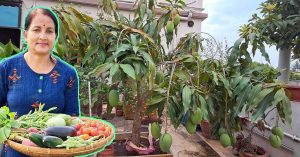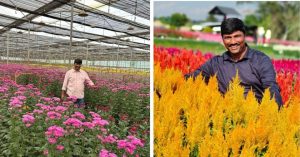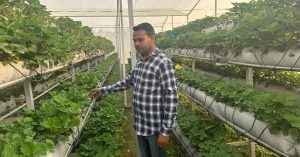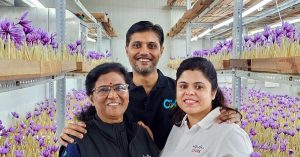Having Used The Internet to Learn, I Now Grow Saffron From Air
Growing up in Solan known for its mushroom production, Gaurav Sabharwal decided to look for a different yet profitable business idea. He started Shoolini Saffron and set up an aeroponics farm to grow the 'red gold' or saffron.
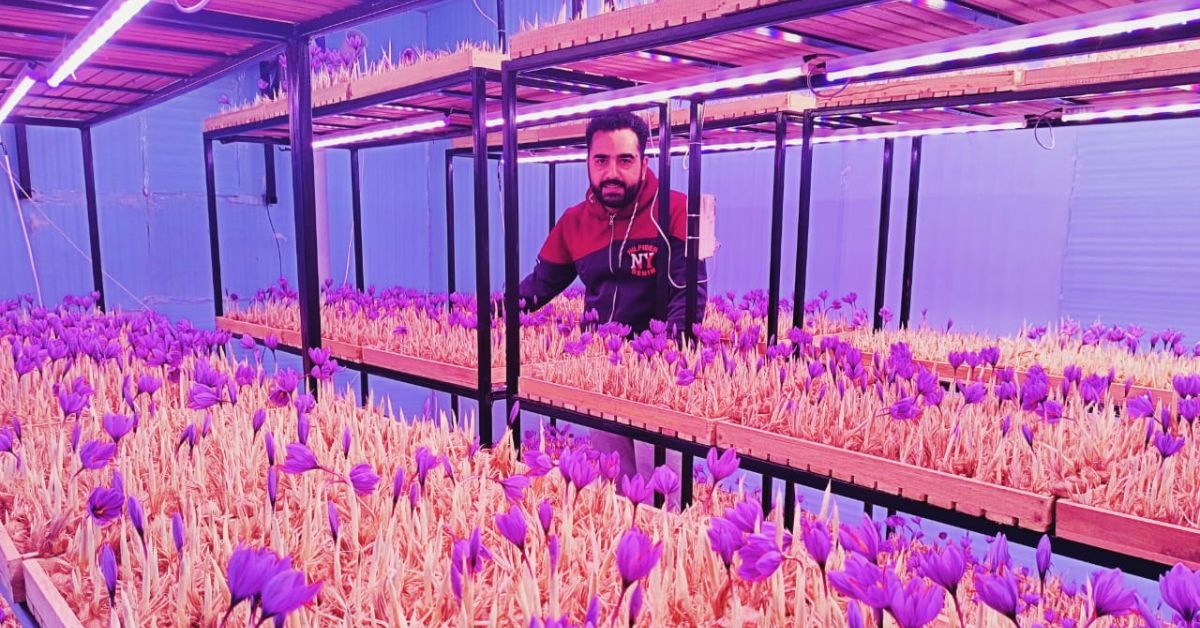
Nestled in the picturesque hills of Solan, Himachal Pradesh, where mist-laden mornings embrace the earth, a new innovation is taking root. This quaint town, revered as the Mushroom City of India, is known in the country for being the largest producer of mushrooms in the country.
Beyond the delicious fungi and beautiful landscapes, the place is also becoming a breeding ground for innovation. While most of the youth shy away from farming — considering it low in profits — Gaurav Sabharwal is changing the narrative.
“I know that many people are of the opinion that farming is not profitable but it depends on what you are growing. While most of the people in the city are into mushroom farming, I decided to do something new to make it more profitable,” he tells The Better India.
The 36-year-old is growing saffron using aeroponics in his 300 sq ft setup in Solan. With a controlled environment and chemical-free environment, he was able to grow 500 gm of the ‘red gold’ and sell it at a remarkable Rs 500 per gram.
Want to know how he grew Saffron that can only be grown in Kashmir? Here is his story –
‘Adversity leads to innovation’
Born and raised in Solan, Gaurav aspired to follow in his father’s footsteps.
“I come from a small place and had humble dreams. After completing my graduation, I decided to join my father in running the family business,” he recalls.
With simple dreams of expanding his father’s shoe business, Gaurav found contentment in following the path his father had paved.
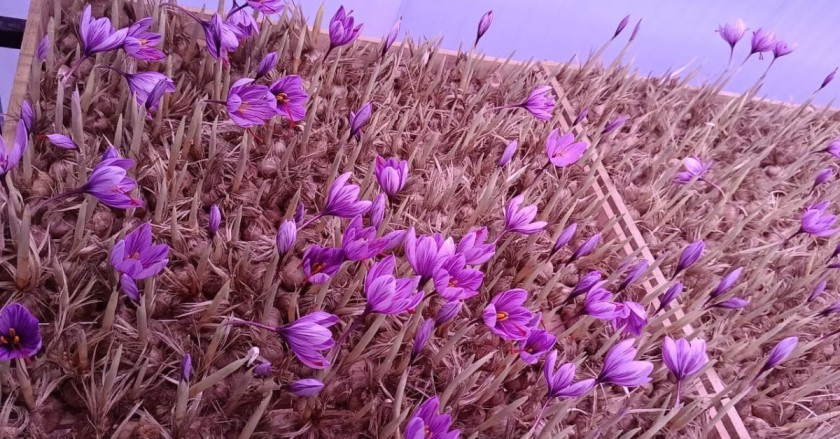
“It was four years ago when things changed with my father passing away. There was a debt on our family that we had to pay, and our shoe business was not making much profit,” he says.
Struck with grief and burdened with the new responsibility of fulfilling the loan, Gaurav worked diligently to make his family business thrive.
“Call it fate, but the business wasn’t yielding much profit, and I felt the pressure to make a change. That’s when I began exploring avenues for more lucrative ventures. One thing I was clear about – I wanted to run a business,” he states.
Continuing, he explains, “I could see numerous mushroom planters in Solan who were earning substantial incomes. However, with the market saturated with producers, prices were steadily decreasing. I realised I needed to do something different.”
Looking for options online is when he found out about the precious ‘red gold’ – saffron.
“Everyone knows how expensive saffron is and how profitable it can be. However, I always assumed that it can only be grown in Kashmir,” he says, adding that he started researching on the internet if there were ways of growing it in Himachal.
“The internet has all the answers and that is how I found out about the technique of using a controlled environment for growing different types of crops,” he says.
He found a few instances where people grew saffron using aeroponics. Aeroponics is a way of growing plants without soil. Instead of planting them in the ground, the plants hang in the air, and their roots are misted with a nutrient-rich spray.
“Aeroponics can help plants grow faster, use less water, and be more resistant to certain diseases compared to traditional soil-based methods. It’s like giving plants a shower of nutrients to help them thrive,” he says.
With his heart set on growing saffron, he set on a journey of learning aeroponics from scratch.
Making profits and teaching others

“I did the first thing that most people would do — go on the internet and read up about aeroponics. I found a bunch of people growing saffron using the technique, and I decided to contact them, reaching out for their help,” he says.
It was during the research that he found out the amount of money he would need to set up his farm lab.
“I did not have that kind of investment, so I sought help from the government. I got a loan of Rs 10 lakh and even got a rebate under PM Modi’s startup scheme,” he says.
With the right investment in hand, Gaurav was ready to try his hand at growing saffron in Solan.
“The greatest factor to consider was that the temperature needed to grow saffron was only in Kashmir in India. So I had to mimic that here in Solan. I used the lab whose temperature can be controlled,” he says.
“After mimicking the environment and planting the seeds, it was important for me to keep a close eye on the buds. I was not aware that they can catch fungus and was taken aback when my first crop did catch it,” he says.
“I was able to get rid of it by drying the affected plants and separating them from the healthy ones,” he adds.
After nearly 8 months of hard labour and planning, Gaurav was able to grow 500 grams of saffron in his aeroponics farm.
“The produce, although not a lot, was a good sign. I was very tense because this was a leap of faith for me. Earlier, I had no intentions of doing anything and seeing those buds flower was a great feeling,” he says.
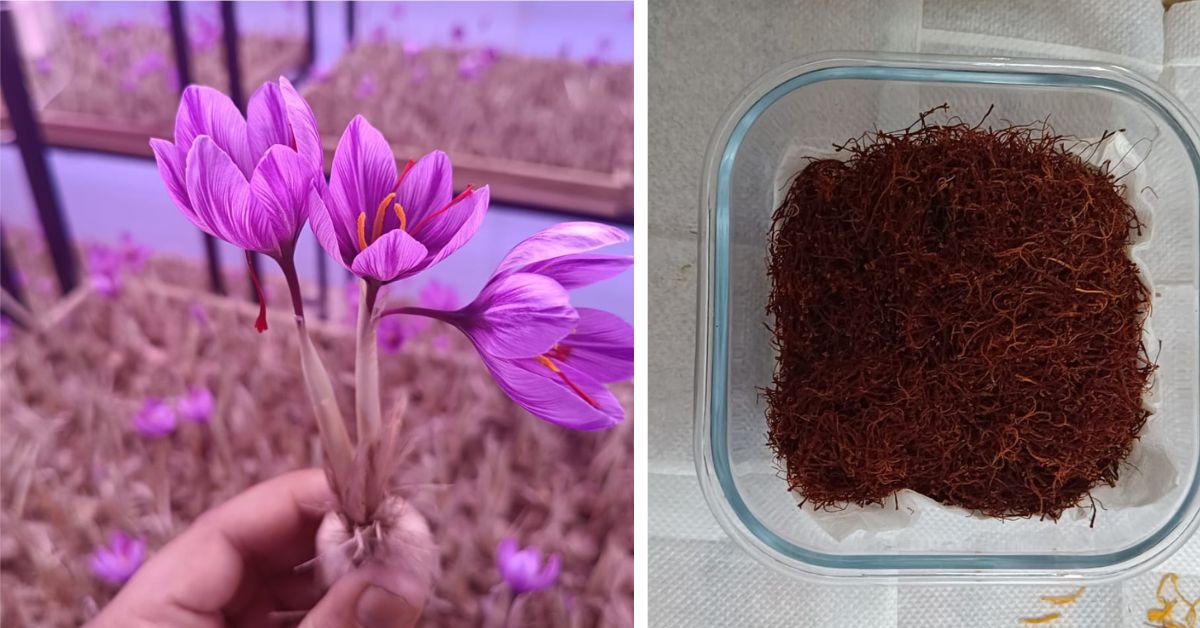
Once ready with his produce, he was able to sell it at Rs 500 per gram. “The market rate was Rs 300 but those are not pure and are usually chemically grown. I had them tested and mine produce was sold for more than the market price,” he gleamingly shares.
Speculating that his investment will soon get returns, Gaurav says, “The best thing about using this technique is that it does not require me to follow the seasons. This makes the produce available to you throughout the year.”
The new technique was also very well received by the people around him. “A lot of people in my city have shown interest in learning how to use aeroponics. I have already taught it to five people and I get inquiries every day,” he says.
Selling his produce under the name of Shoolini Saffron, he says, “I am planning to expand the production more and reach more customers.” If you found our stories insightful, informative, or even just enjoyable, we invite you to consider making a voluntary payment to support the work we do at The Better India. Your contribution helps us continue producing quality content that educates, inspires, and drives positive change. Choose one of the payment options below for your contribution- By paying for the stories you value, you directly contribute to sustaining our efforts focused on making a difference in the world. Together, let’s ensure that impactful stories continue to be told and shared, enriching lives and communities alike. Thank you for your support. Here are some frequently asked questions you might find helpful to know why you are contributing?

If you wish to buy the saffron or learn how to use aeroponics, you can reach Gaurav at 98166 11119.
Edited by Padmashree Pande
This story made me
-
97
-
121
-
89
-
167




